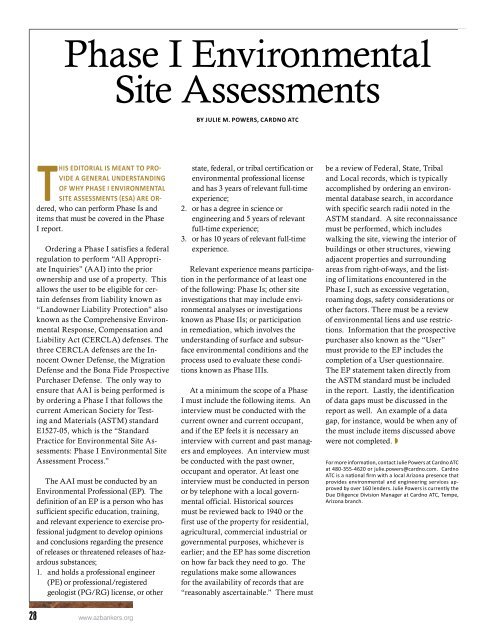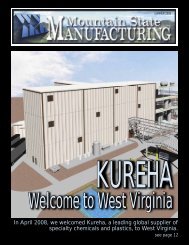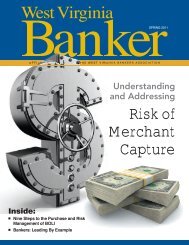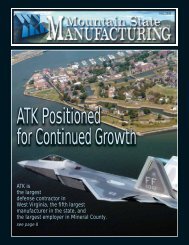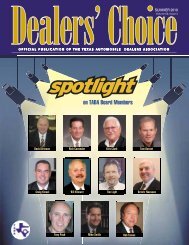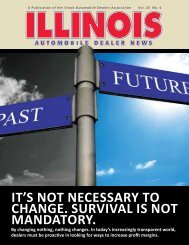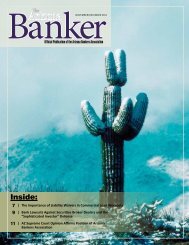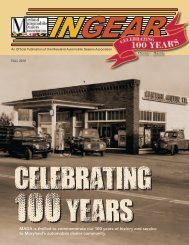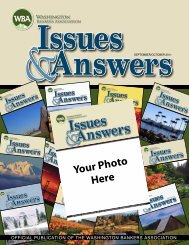Inside: - Media Communication Group
Inside: - Media Communication Group
Inside: - Media Communication Group
Create successful ePaper yourself
Turn your PDF publications into a flip-book with our unique Google optimized e-Paper software.
Phase I EnvironmentalSite AssessmentsBY JULIE M. POWERS, CARDNO ATCTHIS EDITORIAL IS MEANT TO PROVIDE A GENERAL UNDERSTANDINGOF WHY PHASE I ENVIRONMENTALSITE ASSESSMENTS ESA ARE ORdered, who can perform Phase Is anditems that must be covered in the PhaseI report.Ordering a Phase I satisfies a federalregulation to perform “All AppropriateInquiries” (AAI) into the priorownership and use of a property. Thisallows the user to be eligible for certaindefenses from liability known as“Landowner Liability Protection” alsoknown as the Comprehensive EnvironmentalResponse, Compensation andLiability Act (CERCLA) defenses. Thethree CERCLA defenses are the InnocentOwner Defense, the MigrationDefense and the Bona Fide ProspectivePurchaser Defense. The only way toensure that AAI is being performed isby ordering a Phase I that follows thecurrent American Society for Testingand Materials (ASTM) standardE1527-05, which is the “StandardPractice for Environmental Site Assessments:Phase I Environmental SiteAssessment Process.”The AAI must be conducted by anEnvironmental Professional (EP). Thedefinition of an EP is a person who hassufficient specific education, training,and relevant experience to exercise professionaljudgment to develop opinionsand conclusions regarding the presenceof releases or threatened releases of hazardoussubstances;1. and holds a professional engineer(PE) or professional/registeredgeologist (PG/RG) license, or otherstate, federal, or tribal certification orenvironmental professional licenseand has 3 years of relevant full-timeexperience;2. or has a degree in science orengineering and 5 years of relevantfull-time experience;3. or has 10 years of relevant full-timeexperience.Relevant experience means participationin the performance of at least oneof the following: Phase Is; other siteinvestigations that may include environmentalanalyses or investigationsknown as Phase IIs; or participationin remediation, which involves theunderstanding of surface and subsurfaceenvironmental conditions and theprocess used to evaluate these conditionsknown as Phase IIIs.At a minimum the scope of a PhaseI must include the following items. Aninterview must be conducted with thecurrent owner and current occupant,and if the EP feels it is necessary aninterview with current and past managersand employees. An interview mustbe conducted with the past owner,occupant and operator. At least oneinterview must be conducted in personor by telephone with a local governmentalofficial. Historical sourcesmust be reviewed back to 1940 or thefirst use of the property for residential,agricultural, commercial industrial orgovernmental purposes, whichever isearlier; and the EP has some discretionon how far back they need to go. Theregulations make some allowancesfor the availability of records that are“reasonably ascertainable.” There mustbe a review of Federal, State, Tribaland Local records, which is typicallyaccomplished by ordering an environmentaldatabase search, in accordancewith specific search radii noted in theASTM standard. A site reconnaissancemust be performed, which includeswalking the site, viewing the interior ofbuildings or other structures, viewingadjacent properties and surroundingareas from right-of-ways, and the listingof limitations encountered in thePhase I, such as excessive vegetation,roaming dogs, safety considerations orother factors. There must be a reviewof environmental liens and use restrictions.Information that the prospectivepurchaser also known as the “User”must provide to the EP includes thecompletion of a User questionnaire.The EP statement taken directly fromthe ASTM standard must be includedin the report. Lastly, the identificationof data gaps must be discussed in thereport as well. An example of a datagap, for instance, would be when any ofthe must include items discussed abovewere not completed. For more informaon, contact Julie Powers at Cardno ATCat 480-355-4620 or julie.powers@cardno.com. CardnoATC is a naonal firm with a local Arizona presence thatprovides environmental and engineering services approvedby over 160 lenders. Julie Powers is currently theDue Diligence Division Manager at Cardno ATC, Tempe,Arizona branch.28 www.azbankers.org


